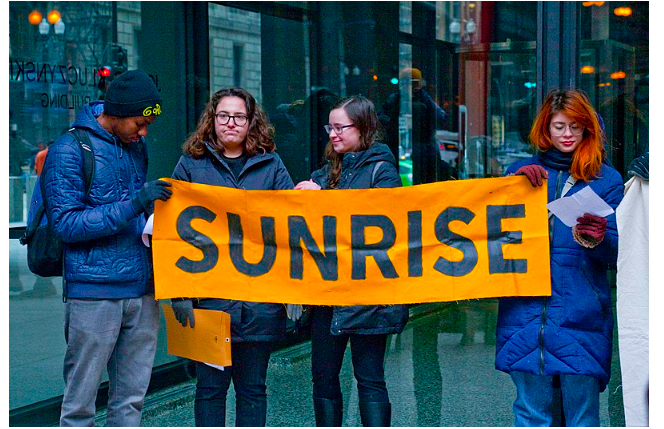2.6 Society and the Natural Environment
At first glance, the environment does not seem to be a sociological topic. The natural and physical environment is something that geologists, meteorologists, oceanographers, and other scientists should be studying, not sociologists. Yet the environment is very much a topic for the sociological study of social change for at least five reasons.
First, our worst environmental problems are the result of human activity. This activity, like many human behaviors, is a proper topic for sociological study. Second, environmental problems have a significant impact on people, as do the many other social problems that sociologists study. Third, solutions to our environmental problems require changes in economic and environmental policies, and the potential impact of these changes depends heavily on social and political factors. Fourth, many environmental problems reflect and illustrate social inequality based on social class and on race and ethnicity. Like many issues in our society, the poor and people of color often fare worse when it comes to the environment. Fifth, efforts to improve the environment, often called the environmental movement, constitute a social movement and, as such, are again worthy of sociological study.
The topic of human-made impacts on the environment have been discussed for many decades. Social and scientific leaders from all walks of life have also discussed ways of mitigating the effects humans have on the environment. They’ve also worked to understand the impacts that our changing environment has on humans and societies.
Watch this 3:10-minute video, “Stockholm, 1972 – When Environmental Protection was Born” for a history of those discussions, as well as efforts being implemented at the global level to support human existence in our changing environmental world. As you do, what initiatives do you see have been put in place to serve society in relation to environmental risks?
Figure 2.33 video, “Stockholm, 1972 – When Environmental Protection was Born”
The video describes how the meeting: “Stockholm+50; a healthy planet for the prosperity of all – our responsibility, our opportunity” took place five decades after the 1972 United Nations Conference on the Human Environment. The event provided leaders with an opportunity to draw on fifty years of multilateral environmental action to take action needed to secure a better future on a healthy planet.
In addition to global efforts by large organizations like the United Nations, much has been discussed and accomplished by grassroots organizations around the world. Grassroots environmental movements have emerged as one of the most successful forms of sociopolitical mobilization to influence how as humans we respond to environmental changes (Anderson 2016).
One example of a powerful grassroots organization is the Sunrise Movement (figure 2.34). Their web page reads they are:
…building a movement of young people across race and class to stop the climate crisis and win a Green New Deal. We will force the government to end the reign of fossil fuel elites, invest in Black, brown and working class communities, and create millions of good union jobs. We’re on a mission to put everyday people back in charge and build a world that works for all of us, now and for generations to come.

Figure 2.34. Chicago Sunrise Movement Rallies for a Green New Deal Chicago Illinois 2-27-19
The Sunrise Movement’s efforts have made significant impact in policy in recent years. In 2020 they forced Democrats running for president to outline their plans for cutting U.S. fossil fuel emissions. They have also moved forward the Green New Deal, a set of policies to address climate change. We’ll discuss more about society and the natural environment, including other grassroots initiatives in Chapter 9.
2.6.1 “Tracing the Root of the Climate Crisis”; The Walls Built in Our Minds
There’s a lot to digest in regards to the study of social change. In part, because there are many intersecting themes involved. For example, the strategy of the Sunrise Movement includes initiatives related to race and class, such as “investing in Black, brown and working class communities.”
Sociology Instructor Ben Cushing has created a series of podcasts, called “Tracing the Roots of the Climate Crisis”. Within each podcast Ben applies some ideas we introduce in this text to the social roots of the environmental challenges we face. The podcasts can serve to help you navigate the intersecting themes we introduce.
Please listen to Ben’s 24-minute episode, “The Walls Built in Our Minds”(figure 2.29). There he looks closer at concepts from this chapter. He explores how cultural ideas, such as our categories of division, function to control society. He also examines how our systems, culture, and social constructions can inform us as we imagine and work for social change.
This podcast is also a sneak peek into some concepts that we’ll cover in later chapters. How do categories of division maintain and justify systems of domination and exploitation – from white supremacy to extractive capitalism? And, how can culture be a site of resistance against systems of power and create alternative ways of living together, tackle patriarchy and white supremacy in order to address the climate crisis?
Figure 2.35 Select the image above to access: “The Walls Built in Our Minds” [Podcast]
2.6.2 Going Deeper
You can read more about the Stockholm+50 conference here
2.6.3 Licenses and Attributions for Society and the Natural Environment
“Society and the Natural Environment” by Aimee Samara Krouskop is licensed under CC BY 4.0. It is a remix of “20.3 Society and the Environment”, no author provided, from Sociology by University of Minnesota, licensed under CC BY 4.0.
Figure 2.33 video, “Stockholm, 1972 – When Environmental Protection was Born” is published by the UN Environment Programme on YouTube.
Figure 2.34. Chicago Sunrise Movement Rallies for a Green New Deal Chicago Illinois 2-27-19 is published by Wikimedia Commons and is in the Public Domain.
Figure 2.35 podcast, “The Walls Built in Our Minds” is published by Podbean.

